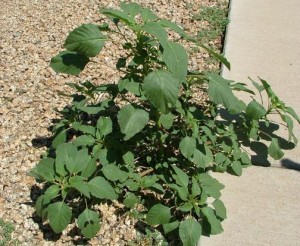 Under the Feet of Jesus brings the reader into the world of a migrant worker family suffering through the many hardships of poverty stricken piscadores. In this book author Helena María Viramontes exemplifies the struggles that these families must go through. A passage from the first chapter of this book truly made me picture what this family must be going through. This book was also very captivating due to the austerity of this migrant family. In this passage by Viramontes she explains how everything that happens to these people will affect them in the long run and are all important aspects for survival. Continue reading
Under the Feet of Jesus brings the reader into the world of a migrant worker family suffering through the many hardships of poverty stricken piscadores. In this book author Helena María Viramontes exemplifies the struggles that these families must go through. A passage from the first chapter of this book truly made me picture what this family must be going through. This book was also very captivating due to the austerity of this migrant family. In this passage by Viramontes she explains how everything that happens to these people will affect them in the long run and are all important aspects for survival. Continue reading
Author Archives: jnead@uoregon.edu
Tree of Metaphors
In Charles Darwin’s book, On the Origin of Species, I was very intrigued by a passage that Darwin wrote comparing a tree to life and its “struggle for existence.” I really enjoyed this passage because it was quite different. I was not used to reading a scientific novel that had used metaphors before. I enjoyed this passage because it painted a picture of what Darwin must have been thinking during the time he was coming up with his theory on natural selection. This tree metaphor that Darwin uses helps explain natural selection and is also a good indicator of what he was imaging before he drew his “tree of evolution.” Continue reading
Dr. Wheeler’s Epigenetics
Wendy Wheeler’s lecture on Green Imaginaries: Biosemiotics, History, Memory and the Future, featured many interesting thoughts upon the natural world and its connection with the environment. Dr. Wheeler described the importance of complexity in nature and how ecocriticism is a great way to understand how the environment works. I thought it was engaging how Dr. Wheeler spoke about Lamarck in her talk especially because he believed that environmental stress is due to epigenetics, which “will cause permanent effects if the environment stays that way” (Dr. Wheeler). Dr. Wheeler described Epigenetics as a very intriguing topic due to the fact that environmental stressors can create changes in a species DNA. Continue reading
Rethinking the Commons
The lecture by Joni Adamson on “Rethinking the Commons” was very intriguing. Adamson focused her lecture on what is considered “the commons” and how the word has changed drastically since it was first coined. “The commons” was first described as a type of resource or land used by the community but now in modern day use it is considered an overgrazed pasture. She described how environmental justice focuses not only on the environment but also social justice in literature. She explains how amaranth or pigweed is actually considered a very durable plant and has been quite resourceful for people during depressions. Adamson goes on to describe Monsanto, a corporation known for its agricultural biotechnology and its production of genetically engineered seeds.
Faith and Nature
In Mary Rowlandson’s book, A Narrative of the Captivity and Restoration of Mrs. Mary Rowlandson, she recounts the transformations she must go through, once natives take her captive. The Second Remove describes her struggles to survive in the “vast and desolate wilderness.” Rowlandson describes how she was exhausted and missed her home and that the Spirit of God was the only thing that kept her going. Rowlandson states, “God was with me in a wonderful manner, carrying me along, and bearing up my spirit, that it did not quite fail” (312). Rowlandson was showing her faith towards God and displays that He was the only thing keeping her from giving up. She describes the wilderness as a very barren place that is exceptionally inhospitable compared to her society. Continue reading
Green Deception
Hybrid waste article:
Hybrid vehicle implications:
http://pubs.acs.org/doi/abs/10.1021/es702178s
Toyota Prius Harmony:
While car companies may give the impression that they are on the green side, it is visible that they are really just concerned with selling another product. Advertisement agencies have been able to take advantage of the consumer’s care for the environment and manipulate it. Consumers are told that if they buy a hybrid car with great gas mileage then they will be saving the planet and will be protecting the younger generations. Although this point is partially true you have to look at the process of creating one of these hybrid cars. For instance, the production that goes into making a Toyota Prius is one that is quite costly towards the environment. According to writer Dave Roos of HowStuffWorks.com, “in 2007, a report commissioned by an auto industry trade group insisted that when you factor in the waste generated during production, the notoriously gas-guzzling Hummer is actually greener than the Prius” (Roos). This shows that although the car does promote environmentally friendly miles per gallon it is actually damaging towards the environment. Not only is the waste produced by a hybrid car terrible for the surroundings, but the manufacturing factor is terrible as well. The process of building a lithium-ion battery takes incredible amounts of energy to produce, more so than a conventional car. They rely on mining nickel, copper and rare-earth metals like lithium, which are responsible for higher sulfur oxide emissions (Constantine Samaras). Continue reading

